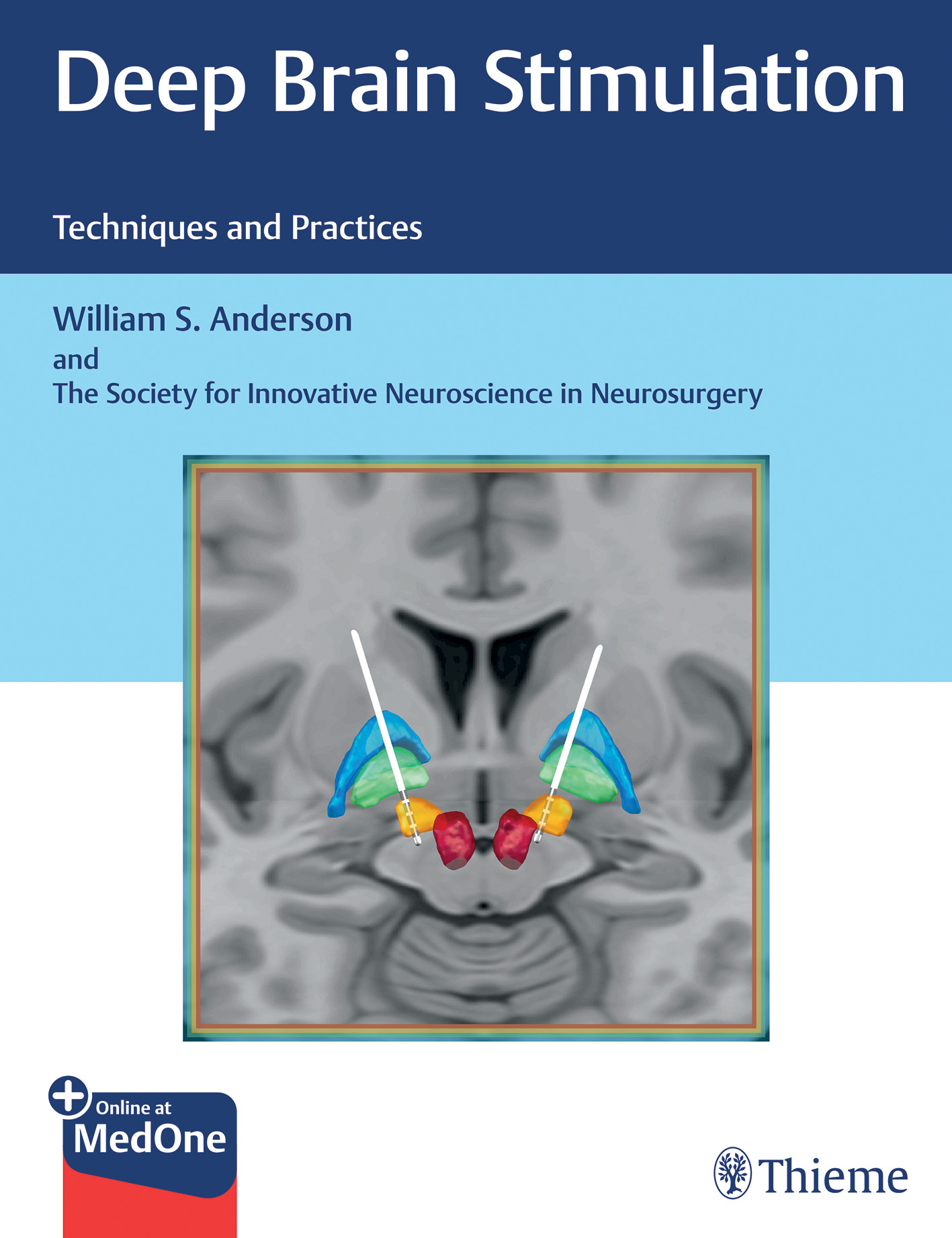Deep brain stimulation (DBS) is an area of practice within Neurology perhaps analogous to DMT for multiple sclerosis, and selection of epilepsy patient for surgery. That is, a subject with which a general neurologist might be familiar only in a very general sense but nonetheless see patients for whom the treatment is exactly the right option to pursue, maybe sooner rather than later. While sitting in a colleague subspecialist clinic might appeal as a means of increasing familiarity, it is hardly realistic in view of the demand on our time.
This multi-author volume with contributors from The Society for Innovative Neuroscience is edited by William Anderson, and has the same level of polish as all the Thieme neurosurgical textbooks. It is concise and has a reasonable price tag, and is intended primarily for practising neurosurgeons as a quick reference. For Movement Disorders neurologists contributing directly to DBS services, it might also be used as a basic reference text. For most of us, it is best considered as a broad-ranging, accessible and authoritative update on DBS, obviously better suited to most of our diaries than arranging to sit in on a suitable colleague’s clinic.
If we consider the volume’s potential readership geographically, rather than by specialism, its North American readers are offered some pointers on the practicalities of setting up a DBS neurosurgery ‘business’ in the last chapter. It is also noticeable that some, but not all, of the individual chapters’ authors adopt the style of referring to authorities of past and present by title, i.e. Dr Smith rather than just ‘Smith’ having done or written such-and-such. I think that may be a North American practice. That quaintness and slight inconsistency aside, the chapters read very well, and the volume as a whole is very coherent.
I was about to make note of an omission for this review, that the role of DBS in status dystonicus was not mentioned. But, while it is not covered in the Dystonia chapter, I found that it was described in the chapter on DBS in Paediatric practice.
In the historical introduction, I was interested to hear that Horsley in the early 1900s treated a patient suffering involuntary movement of one hemibody, by contralateral resection of the motor cortices, i.e through causing paralysis. By the 1930s, however, lesions of the basal ganglia were deployed to relieve movement disorder symptoms, without necessarily causing weakness, although the pioneers of this approach had to contend with criticism from those who held to the prevailing wisdom that any surgery to the basal ganglia would lead to coma. While such reservations seem conceptually bizarre to us, of course, it’s a mere hair’s breadth from some points in the basal ganglia to parts of the brainstem where damage would indeed switch off the lights.
As to the sequence of chapters, they range from sections describing DBS treatment in specific conditions, from PD through other movement disorders, to psychiatric conditions and epilepsy. The ordering seems reasonable, but it would have felt more natural for me if tic disorder has been grouped with the movement disorders rather than after the psychiatric ones. A factual tidbit I won’t forget, not least because I should have been able to work it out for myself, is that the internal segment of the globus pallidus is a bigger thing than the subthalamic nucleus and, therefore, technically easier as surgical target. But of course, there are other interesting, practical insights.
Holistically, the volume’s ethos is very much pro-DBS, which is obviously fair enough for the business-minded DBS neurosurgeon in jurisdictions other than ours! I must say, I think that ethos is also appropriate for clinicians on the front line of managing a whole range of ‘DBS-able’ diagnoses, be they neurologists, other physicians or psychiatrists. On the whole, I think we should be more alert to the suitability and availability of DBS for our patients, and this volume contributes usefully to that.
